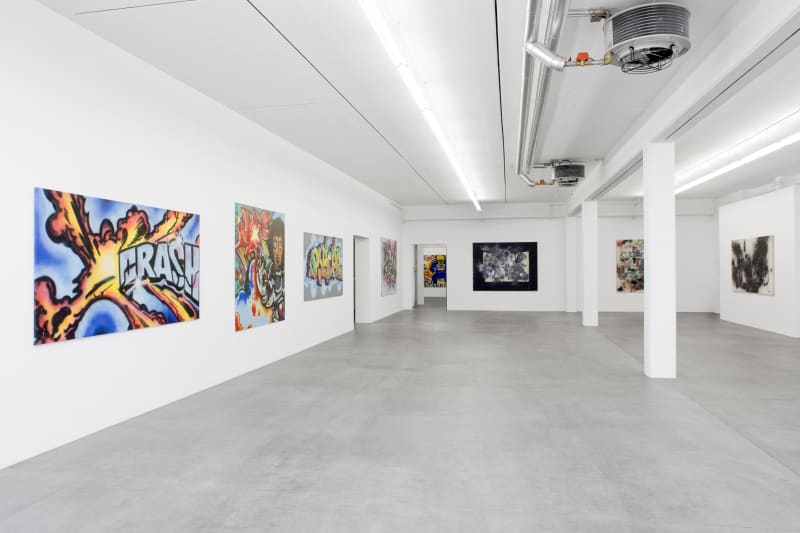The Speerstra Gallery brings together emblematic works of New York and European post-graffiti from the 80's to the present day.
Post-graffiti
Artists' interest in painting on canvas began as soon as graffiti appeared on the streets of New York. Graffiti artists wanted to develop their work in other media. This enabled them to pursue a more personal aesthetic, moving further and further away from street graffiti and opening the doors to the art market.
In 1972, Hugo Martinez, a sociologist at New York University, took note of the artistic and legitimate potential of this first generation of artists. The UGA crew (United Graffiti Artists) and H. Martinez selected the hottest graffiti artists of the day and organized the very first graffiti exhibition at the Razor Gallery. UGA was provided with opportunities that were then inaccessible to these artists; the artists represented were: Phase 2, Mico, Coco 144, Pistol, Flint707, Bama, Snake and Stitch1.
An article in a 1973 New York magazine by Richard Goldstein entitled "The Graffiti Hit Parade" was the first public recognition of graffiti artists. In the early 80's in New York, art galleries such as Fashion Moda, Patti Astor's Fun Gallery, and later Gallery Sydney Janis began showing work on canvas. These galleries later proved to be important factors in the development of the graffiti movement in Europe. The Fun Gallery was run by Hollywood actress Patty Astor, and was recognized as one of the hottest art spots on the New York scene. Here, she exhibited graffiti artists on a par with such household names as Jean-Michel Basquiat and Keith Harring. European art dealers were very receptive to this new art form and quickly realized its artistic potential. In 1983, Dolores Neumann organized an exhibition entitled "Post Graffiti" at the Sydney Janis Gallery, featuring works by eighteen graffiti artists. Works by Dondi White, Lee, Zephyr, Lady Pink, Daze, Futura 2000, Crash, Rammellzee were exhibited. In the Netherlands, successful exhibitions were held at the Boymans-van Beuningen museum in 1983 and the Groninger museum in 1992. Art critics and collectors took the movement very seriously. Today, the artists are recognized by institutions, and many museums have their works in their collections. Graffiti paintings and sculptures are now sold worldwide through auctions and art galleries.
